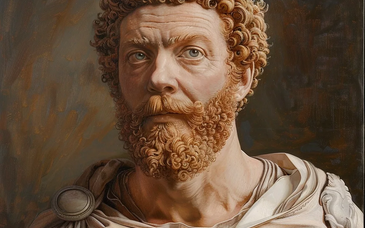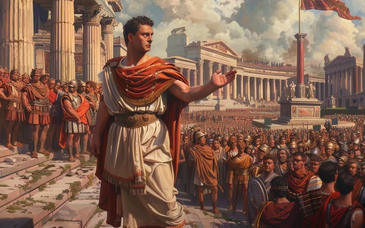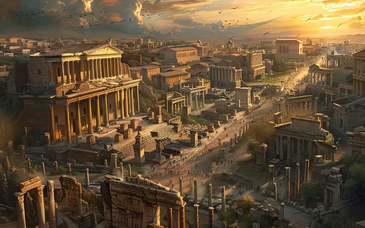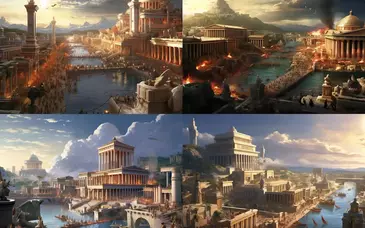The images and busts of Augustus Caesar stand as iconic representations of one of history's most influential figures. The first Emperor of Rome, Augustus left an indelible mark on the ancient world, not only through his political achievements but also through the artistic expressions that sought to immortalize his likeness.
🏛️ Imperial Portraiture:
Augustus, born Gaius Octavius, rose to power after the death of Julius Caesar and became the inaugural Emperor of Rome. Imperial portraiture, a hallmark of Roman art, became a powerful tool for communicating political authority and reinforcing the image of the emperor. Augustus' portraits, characterized by idealized features and a distinctive hairstyle, reflected the fusion of traditional Roman values with the charisma of the new imperial era.
🖼️ Evolution of Representation:
The visual representation of Augustus evolved over his reign, mirroring the changing dynamics of Roman society and the emperor's own perception of power. From youthful depictions showcasing his connection to the revered Julius Caesar to more mature portrayals emphasizing wisdom and statesmanship, the evolution of Augustus' images mirrored the narrative of his rule.
🌐 Spread of Imperial Images:
The reach of Augustus' influence extended far beyond the borders of Rome. Images and busts of the emperor adorned public spaces, temples, and private residences across the vast Roman Empire. This dissemination of imperial imagery served not only as a visual reminder of Augustus' authority but also as a means of promoting loyalty to the central power of Rome.
🏺 Cultural Impact:
Augustus' portraits and busts had a profound cultural impact, influencing subsequent artistic periods and shaping the concept of imperial representation. The emperor's image became synonymous with the Pax Romana, an era of relative peace and stability, and his likenesses served as models for future rulers seeking to emulate the ideals of Augustan leadership.
🔍 Archaeological Discoveries:
Archaeological excavations have unearthed numerous statues and busts of Augustus, providing invaluable insights into the artistic techniques of the time and the ways in which the emperor's image was crafted and disseminated. These discoveries contribute to our understanding of the intersection between art, politics, and propaganda in ancient Rome.
🎨 Artistic Expressions:
Augustus' images inspired not only official portraits but also artistic expressions across various mediums. Mosaics, frescoes, and sculptures in diverse styles and contexts showcased the emperor's enduring influence on Roman aesthetics. Augustus' visual legacy became intertwined with the artistic identity of the empire.
🌟 Symbol of Roman Identity:
The images and busts of Augustus served as symbols of Roman identity and continuity. As the founder of the Roman Principate, Augustus established a visual language that reinforced the connection between the ruler and the people. His portraits became an integral part of the Roman narrative, symbolizing the stability and grandeur of the imperial system.
💡 Educational Resources:
Today, Augustus' images and busts continue to be studied and appreciated as vital educational resources. Digital archives, museum collections, and scholarly publications enable enthusiasts, historians, and art lovers to explore the nuances of Augustan portraiture and its impact on the visual culture of ancient Rome.
In the images and busts of Augustus, we encounter not just representations of a historical figure but windows into the complexities of Roman politics, culture, and art. As we gaze upon these artistic creations, we connect with the visual legacy of an emperor whose influence reached far beyond his time, shaping the very essence of imperial Rome.





